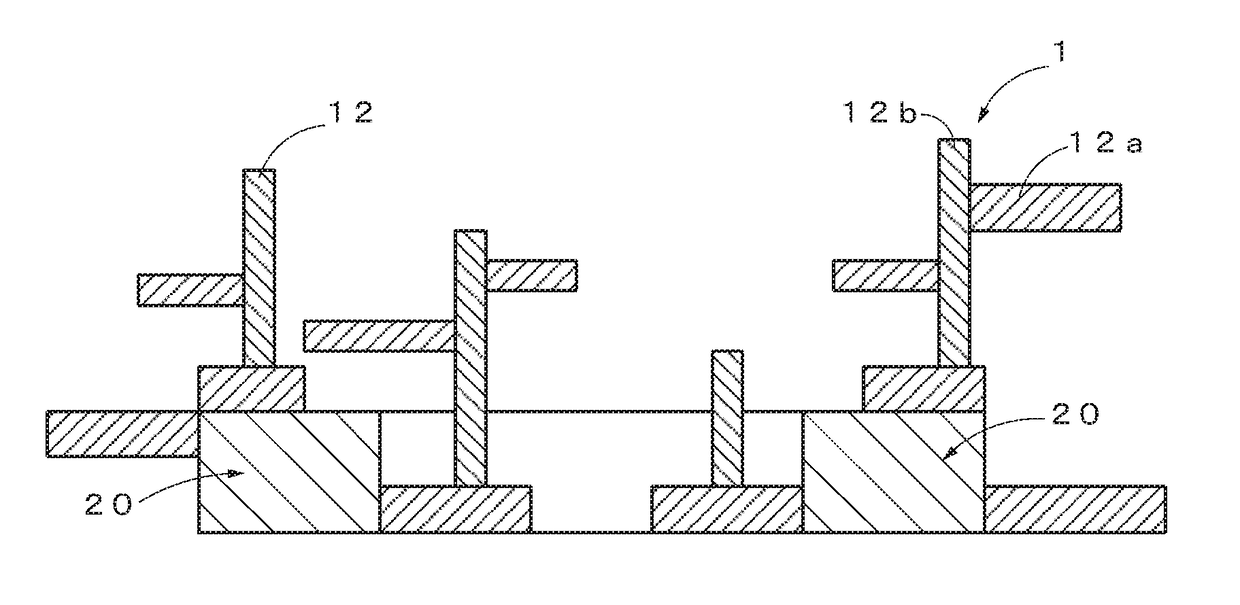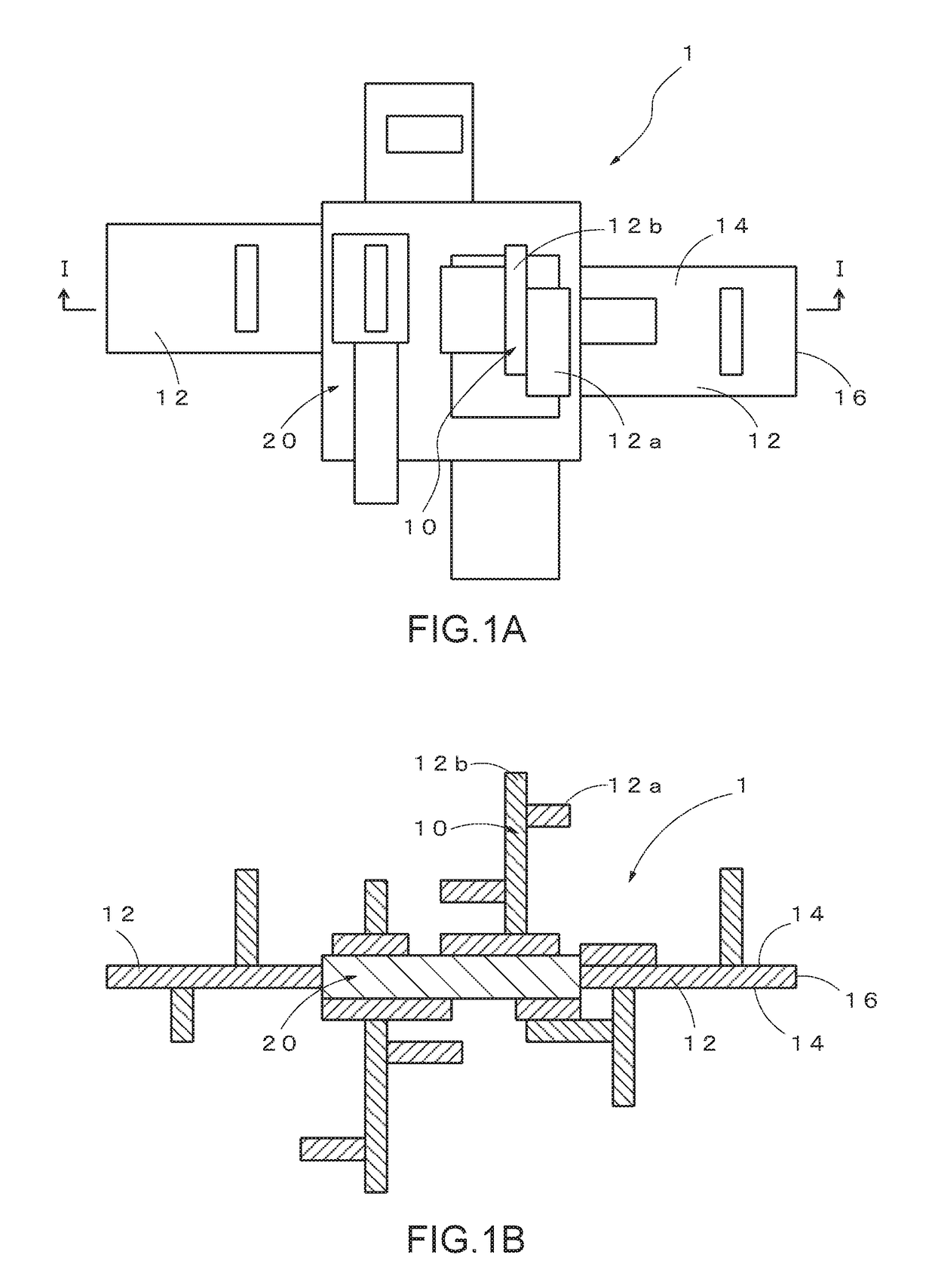Base material-integrated nanocrystalline metal oxide composite-containing catalyst, method for manufacturing the same, and catalyst component
- Summary
- Abstract
- Description
- Claims
- Application Information
AI Technical Summary
Benefits of technology
Problems solved by technology
Method used
Image
Examples
example 1
[0060]500 mg of nano copper small pieces (base material) having a square of 100 nm and a thickness of 2 nm were mixed with 1 g of copper(II) chloride dihydrate and 0.8 g of urea to obtain a mixture. Thereafter, to the mixture, 80 cc of ethylene glycol and 120 cc of water were added to obtain a mixed solution. The mixed solution was heat-treated at 150° C. for 5 hours during stirring. Thereafter, the heat-treated mixture was washed with pure water, and vacuum-dried at 70° C. under vacuum for 10 hours to obtain a copper oxide catalyst which was a base material-integrated nanocrystalline metal oxide composite-containing catalyst in which 200 mg of a nanocrystalline metal oxide composite made of a copper oxide nanocrystalline piece existed on the surface of the base material.
[0061]The form of fine particles forming the obtained copper oxide catalyst powder was observed using a scanning transmission electron microscope (SEM). When the obtained electron microscope image was observed, a sm...
example 2
[0062]The copper oxide catalyst obtained in Example 1 was placed in a container, subjected to vacuum deaeration, and heated at 150° C. for 1 hour. Into the container in which 700 mg of the copper oxide catalyst was placed, 4.0 mg of a chloroplatinic acid [H2PtCl6.(H2O)6] powder was added at room temperature, followed by mixing to obtain a mixture. Thereafter, the mixture was stirred under a nitrogen atmosphere at 150° C. for 1 hour, and stirred while being held under a hydrogen atmosphere at 250° C. for 1 hour, to obtain a nanocrystalline platinum-containing copper oxide catalyst which was a base material-integrated nanocrystalline metal oxide composite-containing catalyst.
example 3
[0063]On the surface of a carrier having a square of 100 nm and a thickness of 2 nm and made of alumina (Al2O3), copper was deposited so as to have a thickness of 10 nm and a line width of 100 nm in a mesh form having a mesh interval of 1 μm by electroless plating, and heat-treated at 100° C. in atmospheric air for 1 hour to provide a base material containing an oxide coating having a thickness of 1 nm. The carrier on which the base material was provided was mixed with 1 g of copper (II) chloride dihydrate and 0.8 g of urea to obtain a mixture. Thereafter, to the mixture, 80 cc of ethylene glycol and 120 cc of water were added to obtain a mixed solution. The mixed solution was heat-treated at 150° C. for 5 hours during stirring. Thereafter, the heat-treated mixture was washed with pure water, and vacuum-dried at 70° C. under vacuum for 10 hours to obtain a carrier having a surface on which a copper oxide catalyst was provided, as a base material-integrated nanocrystalline metal oxid...
PUM
| Property | Measurement | Unit |
|---|---|---|
| Fraction | aaaaa | aaaaa |
| Fraction | aaaaa | aaaaa |
| Fraction | aaaaa | aaaaa |
Abstract
Description
Claims
Application Information
 Login to View More
Login to View More - R&D
- Intellectual Property
- Life Sciences
- Materials
- Tech Scout
- Unparalleled Data Quality
- Higher Quality Content
- 60% Fewer Hallucinations
Browse by: Latest US Patents, China's latest patents, Technical Efficacy Thesaurus, Application Domain, Technology Topic, Popular Technical Reports.
© 2025 PatSnap. All rights reserved.Legal|Privacy policy|Modern Slavery Act Transparency Statement|Sitemap|About US| Contact US: help@patsnap.com



